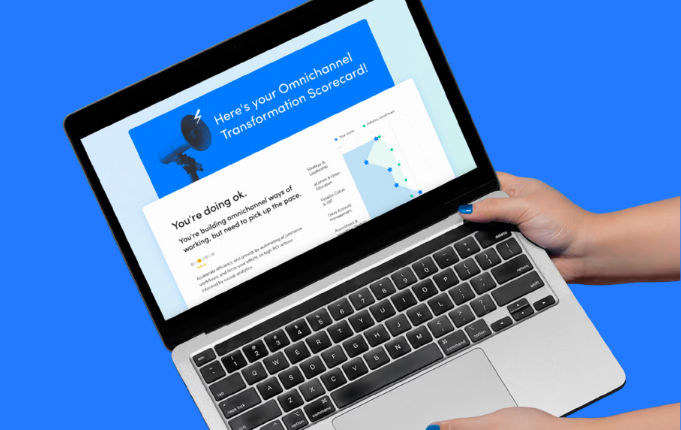
Today’s retail landscape is rapidly evolving. With access to anytime/anywhere information via their smartphones, shoppers have unprecedented visibility into product and pricing information. In an increasingly competitive retail environment, we outline three key reasons why online price intelligence matters for every retailer – whether you sell online or not.
Responding to shifting shopper behaviour is critical to surviving in today’s hypercompetitive environment. Whether you sell online or not, your shopper is actively going online to reference price, stock availability, ratings and reviews, and other influential content.
In the same way that your customers are comparing prices, every retailer – whether they be an online, multichannel or brick-and-mortar retailer – needs competitive insights into other retailers’ online prices to help them:
- Understand their price position
- Price competitively
- Identify opportunities to improve margins
- Convert more sales and build basket size
- Offer the right product assortment
- Plan promotions more effectively
We look at the key trends that retailers need to be aware of to ensure they survive and thrive in this new digital world.
1. Offline is influenced by online: 50% of retail sales are now digitally influenced
Digital’s influence on in-store purchases is growing much faster than many anticipated. Research from Deloitte reveals that digital interactions now influence over a third (36%) of every dollar spent in-store, representing $1.1 trillion. By the end of 2014, Deloitte estimates this number will rise to 50 percent, or $1.5 trillion of total store sales – and suggests that retail has now reached a tipping point.
Deloitte found that 84 percent of store visitors use their mobile devices before or during a shopping trip. Smartphone devices alone influence $593 billion, or 19 percent of all in-store retail sales – a significant increase from 2012 when smartphones represented just 5 percent of in-store sales.
And in 7 out of 11 store types studied, Deloitte found that the top digital activity was comparing prices or finding coupons.
Figure 1: Digital Influence Factor Projections
source: Deloitte Digital
Although the threat of showrooming has long been a concern for retailers, Deloitte reports that digital shoppers actually spend more: consumers who use a mobile device during their shopping journey convert at a rate 40 percent higher than those shoppers who do not use a device.
Whilst digital’s influence will affect every retail category, some sectors are predicted to be more impacted than others, namely Grocery, Apparel and Accessories, Home Improvement and Consumer Electronics. As more and more shoppers go online to conduct research, or will have a smartphone in hand whilst in a physical store, staying price competitive is key.
- Do you know what digital touchpoints your shoppers are referencing before and during trips to your store?
2. Responsiveness and relevance in an increasingly price-sensitive consumer landscape
RSR’s latest benchmark on the state of pricing in retail reveals that consumer price sensitivity continues to dominate the pricing challenges of retailers of all sizes. 56% of all retailers surveyed listed increased consumer price sensitivity as a top-3 business challenge, essentially unchanged from 57% in 2013.
Figure 2: Top 3 Strategic Pricing Challenges for Retailers
source: RSR Research, April 2014
With growing numbers of shoppers comparing in-store prices to online prices instantly, RSR states that retailers are ‘flying blind more than they should.”
RSR classified responding retailers as “winners” or “laggards” based on year-over-year comparable store sales growth. Among the winners (the group with comparable store sales outperforming the industry average), 65% cited the ability to respond quickly to competitors’ price changes, versus just 44% of laggards.
Figure 3: “Retail Winners’” Pricing Capabilities
source: RSR Research, April 2014
Though the retail winners’ pricing strategies do not appear to be defined by their competitors’ pricing, the majority do appear to have the capability to rapidly understand, analyse, and react to competitors’ pricing and promotional changes.
- Do your shoppers have better visibility into your competitors’ prices than you do?
3. Amazon’s growth engine is powered by competitive pricing
Online retail sales growth is outpacing total retail growth by an average of 4-5x, and Amazon is outpacing total online retail sales growth by an additional 1.5-2x, capturing unprecedented share and disrupting established channels with its endless selection and dynamic pricing.
NRF’s top 100 retailers’ chart shows Amazon ranks #9 by sales, growing 27.2% in 2013 – far outstripping the growth of traditional retailers Walmart (1+1.7%) and Kroger (1.6%). (And this excludes the “gross merchandise value” of Amazon’s third-party marketplace, which accounts for ~40% of units sold on Amazon and has grown more quickly than Amazon’s own first-party business!)
Figure 4: Top 10 US Retailers by US sales
source: NRF
Amazon competes on many dimensions, but especially on selection, customer experience, and price. Regarding price, Amazon’s founder Jeff Bezos once said:
“There are two kinds of companies, those that work to try to charge more and those that work to charge less. We will be the second.”
And though the retailer is notoriously guarded about its dynamic pricing capabilities, Profitero’s data suggests that Amazon (like a growing number of retailers both online and offline) uses competitors’ online prices as one of several inputs into its dynamically rendered prices.
In order to compete with the online powerhouse, Forrester predicts that retailers will likewise need to develop real-time pricing and digital channel capabilities to maintain and grow market share in 2015 and beyond.
Citing Profitero data on Amazon’s 2.5 million price changes every day, KPMG also states the belief that pricing analytics is key and will become a competitive standard for all retailers over the next several years:.
“Consumers have benefited enormously online – from new e-tail competitors to price transparency and collaborative consumption. Pricing analytics, dynamic pricing and auction models enabled by data and technology will even things up. Retailers that don’t get it right are unlikely to survive.”
But how should retailers compete with Amazon? And how easy is it respond to online prices in-store?
Brick-and-mortar retailers clearly cannot afford the time and effort to visit competing stores to benchmark their pricing, nor should they necessarily aspire to match Amazon (or other low-price leaders). But traditional retailers can still stay competitive on price by monitoring their competitors’ online pricing. In fact, a growing number of price optimization models, including that of Profitero partner Revionics, use online prices as one of several key inputs into algorithmic pricing models that help maximize profitability and shopper loyalty.
Insights into your competitors’ online prices is key to staying price competitive. Request a demo today to find out how Profitero can help you navigate the new retail environment. And if you’re already considering a price intelligence solution, be sure to read our latest White Paper “Five Questions To Ask When Selecting a Price Intelligence and MAP Monitoring Solution”.
About Profitero
Profitero collects online data on more than 250 million products every day, delivering global online insights and eCommerce intelligence to the world’s biggest retailers and brands.
We provide both brick & mortar and online retailers with their competitors’ prices, promotions and full product assortment information. More than 50 global retailers, including Staples, Waitrose, Ocado, Morrisons, Walmart-owned Sam’s Club and Worten, rely on Profitero’s accurate and timely competitor price intelligence to make better informed and more profitable pricing decisions, helping them to increase sales as well as margins.
Profitero also supplies brands with critical online insights, helping to enhance their online sales and market positioning. We deliver key online metrics, including share of online shelf, share of voice, pricing, brand price monitoring and new product monitoring, in any country and from any online or multichannel retailer, updated every day.


























